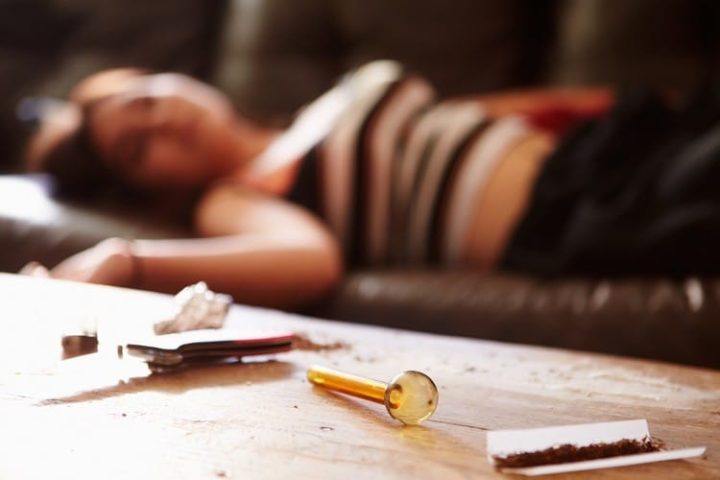
The Biden administration is spending $30 million to provide drug addicts with crack pipes, syringes, and safe-sex kits, among other “supplies,” in a bid to advance “racial equity” and provide “support” for “underserved communities.” The Department of Justice (DOJ) signaled last week that it was considering allowing “safe injection sites” for heroin addicts.
“Harm reduction” or incentivizing?
The Washington Free Beacon reported that the grant program, which will begin in May, will provide funds to nonprofits and local governments to “help make drug use safer for addicts.” The grant is overseen by the Department of Health and Human Services (HHS) and will run for three years. It includes awards of $400,000 for 25 municipal applicants. The funding is provided through American Rescue Plan Act of 2021.
According to the grant program, the grantees will have to “purchase equipment and supplies to enhance harm reduction efforts,” such as:
• Harm reduction vending machine(s), including stock for machines;
• Infectious diseases testing kits (HIV, HBV, HCV, etc.);
• Medication lock boxes;
• FDA-approved overdose reversal medication (as well as higher dosages now approved by FDA);
• Safe sex kits, including PrEP resources and condoms;
• Safe smoking kits/supplies;
• Screening for infectious diseases (HIV, sexually transmitted infections, viral hepatitis);
• Sharps disposal and medication disposal kits;
• Substance test kits, including test strips for fentanyl and other synthetic drugs;
• Syringes to prevent and control the spread of infectious diseases;
• Vaccination services (hepatitis A, hepatitis B vaccination); and
• Wound care management supplies.
The HHS representative told the Free Beacon that the smoking pipes could be used to smoke crack cocaine, crystal methamphetamine, and “any illicit substance.”
While the HHS spokesman did not specify what will be included in the smoking kits, he implied that there would be “safe” non-glass smoking pipes. The representative explained that they would reduce the risk of infection when smoking substances. The glass pipes typically used by addicts are associated with a greater risk of catching an infectious disease though cuts and cores.
The program explicitly prioritizes “underserved communities that are greatly impacted by the SUD [substance use disorder]” to receive the government “care.” It provides that the definition of such communities is given in section two of President Joe Biden’s Executive Order 13985.
Per that order, the term “underserved communities” refers to populations that have been “systematically denied a full opportunity to participate in aspects of economic, social, and civic life, as exemplified by the list in the preceding definition of ‘equity.’ Such communities, according to Biden, include black, Latino, and Indigenous and Native American persons, Asian Americans and Pacific Islanders and other people of color; members of religious minorities; LGBTQ+; people with disabilities; those living in rural areas; and persons otherwise adversely affected by persistent poverty or inequality.”
The grant document specifies that all of those “under-resourced” groups deserve a “health equity,” which means that “everyone has a fair and just opportunity to be as healthy as possible.”
Judging from the spirit of the program, the Biden administration believes that the best possible health outcomes for people of color and other minorities can be achieved by handing them “safe” crack pipes and other auxiliaries to use drugs, and giving them the ability to occasionally test themselves for STDS and other infectious diseases and take anti-overdose drugs when needed.
Sergeant Clyde Boatwright, president of the Maryland Fraternal Order of Police, has harshly criticized the effort. He told the Free Beacon that the government should invest in programs that would prevent people from using drugs. He said that programs so enable “safe” drug use would only contribute to the issue.
“If we look at more of a preventive campaign as opposed to an enabling campaign, I think it will offer an opportunity to have safer communities with fewer people who are dependable on these substances,” Boatwright said.
Some Democrat-run cities such as San Francisco and Seattle have experimented in recent years with “safe smoking” and other similar programs, yet the results are discouraging. Both cities have experienced a dramatic increase in drug overdoses (see here and here).
The New American has recently reported that New York City is set to install stations that will dispense the anti-overdose drug naloxone, sterile syringes, and other “harm reduction and wellness supplies” in a bid to lower the drug overdoses in predominantly non-white neighborhoods.
Injecting Heroin “Safely”
The Biden administration, however, does the exact opposite. In addition to distributing crack cocaine pipes, it is actively “evaluating” the possibility of allowing “safe injection sites” for heroin and other dangerous drugs, the DOJ told The Associated Press Friday. The DOJ apparently believes that if those narcotics are injected in a “safe environment” and under supervision, that would lower the risks of overdoses.
U.S. Representative Nicole Malliotakis (R-N.Y.) had previously urged Attorney General Merrick Garland to drop that idea and was disappointed with the DOJ’s statement.
“Instead of stopping the deadly drugs streaming over our border, putting drug dealers behind bars and helping people receive the long-term treatment they need to overcome addiction, Democrat leadership is enabling illegal drug use,” Malliotakis lamented.
Steven Bozza, Ph.D. candidate, and Jeffrey Berger, M.D., argued in an article published in the U.S. National Library of Medicine that the “safe injection sites” do not improve the well-being of people using them. They stress that only a complete withdrawal from drugs could restore people’s health. “The argument that the benefit to those suffering from addiction lies in the safe, sterile environment in which to inject the illicit recreational drug is incorrect. They do not offer reasonable hope of benefit to those suffering from addiction,” Bozza and Berger noted.




